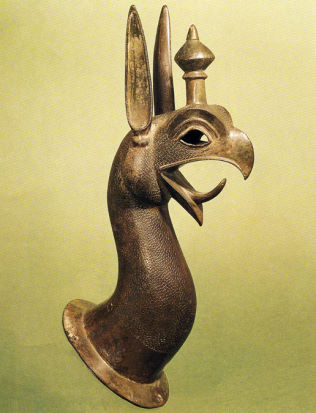 Griffin Protome Original British Museum
Griffin Protome Original British Museum
The Griffin
(Greek. gryps, loanword from babylon. -assyr. kuribu) was a hybrid being with the head and swing of an eagle in front and body, paws and tail of a lion in the back. The griffin played a far less important role in ancient popular beliefs than the heraldic animal and inn sign of the Middle Ages. But surely the people of antiquity saw him as a guardian of the gold mines.
This bronze grip, known in archaeology as an Attasche, served with several other handles on the upper edge of a bronze vessel as ornament and handle. Non-independent sculptural works of art, which represent the upper part of an animal, mythical creature or human being and were connected with vessels, devices, sculptures or buildings, are also called by the experts as protomes.
Gryphon-Protome probably originated on the island of Rhodes, 650 BC, exhibit of the British Museum in London.
Replica made of ceramic, a high-strength special gypsum, in bronze finish. The original size is 26 cm high.